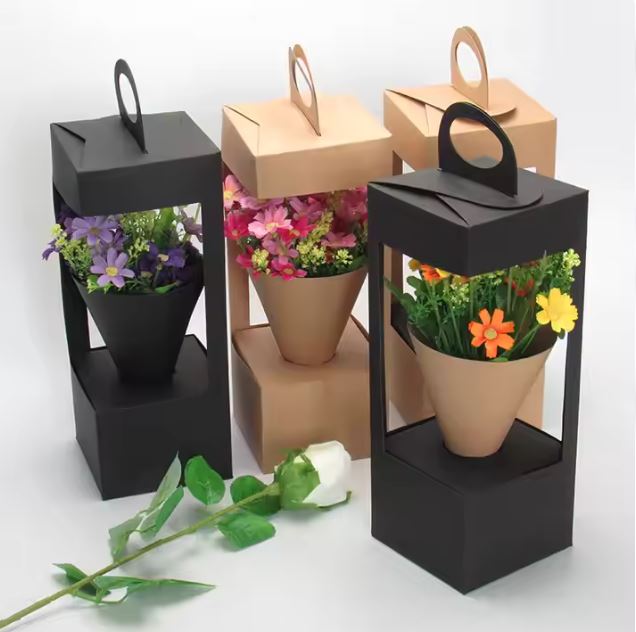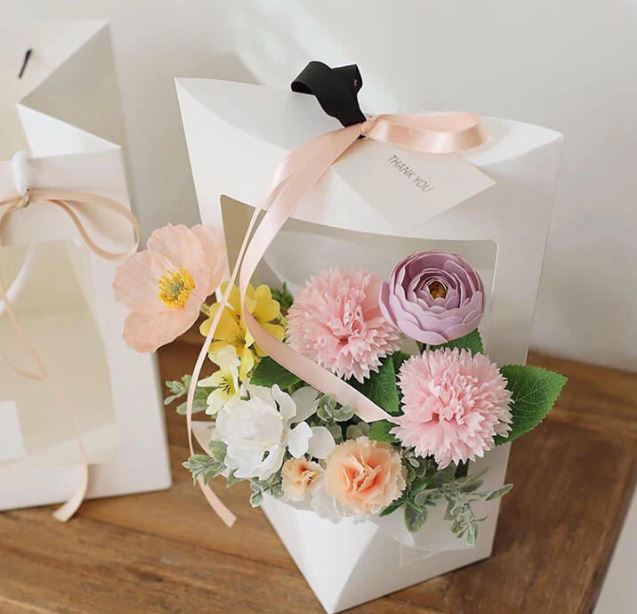- All
- Product Name
- Product Keyword
- Product Model
- Product Summary
- Product Description
- Multi Field Search
Views: 199 Author: XianDa Publish Time: 2024-12-23 Origin: Site

Content Menu
● How to Prepare a Flower Box for Planting
● Choosing the Right Flower Box
>> Material
>> Drainage
● Selecting Plants for Your Flower Box
>> Color Scheme
>> 1. Arrange Plants Before Planting
>> 2. Remove Plants from Containers
>> Watering
>> Fertilizing
>> Spring
>> Summer
>> Fall
>> Winter
● Advanced Tips for Stunning Flower Boxes
>> 1. Layering
Preparing a flower box for planting is an essential step in creating a beautiful and thriving container garden. Whether you're a seasoned gardener or a beginner, this comprehensive guide will walk you through the process of setting up your flower box for success. We'll cover everything from choosing the right container to selecting the perfect plants for your space. Let's dive in and transform your flower box into a stunning display of colors and textures!
Before you start planting, it's crucial to select the appropriate flower box for your needs. Consider the following factors:


Choose a flower box that fits your available space. Window boxes typically range from 24 to 48 inches in length. Ensure the box is wide enough to accommodate your chosen plants' root systems[1].
Flower boxes come in various materials, including:
- Wood (cedar, redwood)
- Plastic
- Fiberglass
- Metal (aluminum, copper)
Each material has its pros and cons, so choose one that suits your climate and aesthetic preferences.
Proper drainage is essential for healthy plants. Make sure your flower box has drainage holes to prevent waterlogging[1].
Once you've selected your flower box, follow these steps to prepare it for planting:
If you're using a previously used flower box, clean it thoroughly with a mild soap solution and rinse well. This helps prevent the spread of diseases and pests[1].
Place a layer of broken pottery shards, small rocks, or pebbles at the bottom of the box to improve drainage[1].
For wooden boxes, consider lining the interior with plastic to extend the box's lifespan. Be sure to punch holes in the plastic that align with the drainage holes[1].
Use a high-quality potting mix specifically designed for container gardening. The Flower Factory recommends using a mix that includes:
- Peat moss
- Perlite
- Vermiculite
- Slow-release fertilizer
Fill the box to about 1 inch below the rim to allow space for watering[1][5].
Choosing the right plants is crucial for a successful flower box. Consider the following factors:
Determine how much sunlight your flower box receives and choose plants accordingly:
- Full sun (6+ hours of direct sunlight)
- Partial sun/shade (3-6 hours of direct sunlight)
- Full shade (less than 3 hours of direct sunlight)[1]
Create a cohesive look by selecting plants with complementary colors. The Flower Factory offers a wide range of colorful options to suit any palette[1].
Use the "thriller, filler, spiller" technique for a well-balanced arrangement:
- Thrillers: Tall, upright plants for the center or back of the box
- Fillers: Medium-height plants to add fullness
- Spillers: Trailing plants to cascade over the edges[1][6]


Now that you've prepared your flower box and selected your plants, it's time to start planting:
Place your plants (still in their nursery pots) in the flower box to visualize the arrangement. Adjust as needed before planting[2].
Gently remove each plant from its nursery pot, loosening the roots if they're tightly bound[2].
Dig holes in the potting mix and place your plants, starting with the thrillers, then fillers, and finally spillers. Ensure the plants are at the same depth as they were in their original containers[2][6].
Fill in any gaps with additional potting mix, gently firming it around the plants[2].
Water your newly planted flower box until water drains from the bottom. This helps settle the soil and ensures good root-to-soil contact[2].
To keep your flower box looking its best, follow these maintenance tips:
Container plants typically need more frequent watering than in-ground plants. Check the soil moisture daily and water when the top inch feels dry[3].
Use a balanced, water-soluble fertilizer every 2-4 weeks during the growing season. The Flower Factory offers specially formulated fertilizers for container plants[3].
Remove spent blooms regularly to encourage continuous flowering. Prune plants as needed to maintain shape and prevent overcrowding[3].
Monitor your plants for signs of pests or diseases. Address any issues promptly using appropriate treatments[3].
Adjust your flower box plantings throughout the year to maintain interest:
Plant early-blooming annuals and bulbs for a burst of color after winter[3].
Choose heat-tolerant plants that can withstand hot temperatures and intense sunlight[3].
Incorporate autumn-hued flowers and foliage plants for a seasonal display[3].
In milder climates, plant evergreens and cold-hardy annuals. In colder regions, consider decorating with non-living materials like branches and berries[3].
To take your flower boxes to the next level, consider these advanced techniques:

Create depth and interest by layering plants of different heights. Place taller plants towards the back or center, medium-height plants in the middle, and trailing plants at the front and edges[6].
Combine plants with different leaf textures and shapes to add visual interest. Mix broad-leaved plants with fine, feathery foliage for a dynamic display[6].
Plan for continuous blooms throughout the season by incorporating plants with different blooming periods. This ensures your flower box remains colorful and vibrant all season long[8].
Add height and drama to your flower box by incorporating vertical elements like small trellises or stakes for climbing plants. This can create a stunning backdrop for your arrangement[8].
Consider mixing ornamental plants with edible herbs or compact vegetable varieties. This not only adds visual interest but also provides fresh ingredients for your kitchen[9].
Be prepared to swap out plants as the seasons change. This keeps your flower box looking fresh and allows you to adapt to changing weather conditions[8].
Preparing a flower box for planting is a rewarding process that allows you to create a beautiful, personalized garden in a small space. By following these steps and considering factors like sunlight, plant selection, and maintenance, you'll be well on your way to enjoying a stunning flower box display. Remember to visit your local Flower Factory for expert advice and a wide selection of plants and supplies to make your flower box dreams a reality.

With proper care and attention, your flower box can become a focal point of your home's exterior, attracting admiring glances and even local wildlife like butterflies and hummingbirds. Don't be afraid to experiment with different plant combinations and styles to find what works best for your space and personal taste. Happy planting!
Citations:
[1] https://www.zucchinisisters.com/window-box-flowers/
[2] https://www.deucecitieshenhouse.com/2014/05/gardening-basics-planting-a-window-box.html
[3] https://anextraordinaryday.net/how-to-plant-a-window-box-garden-tutorial-planting-tips/
[4] https://www.bhg.com/gardening/container/plans-ideas/how-to-plant-window-box/
[5] https://www.carmenjohnstongardens.com/blog/carmens-guide-to-your-best-window-box
[6] https://www.containedcreations.com/blog/plant-window-boxes-like-a-pro
[7] https://potsplantersandmore.com/blog/5-easy-tips-to-better-gardening-in-planter-boxes/
[8] https://www.thecoastaloak.com/how-to-plant-window-boxes/
[9] https://www.swansonsnursery.com/blog/how-to-garden-in-planter-boxes
[10] https://www.youtube.com/watch?v=v0ui3QNdsbA